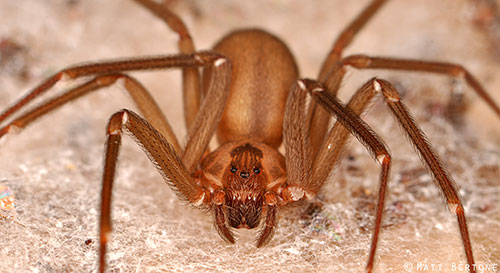
This Halloween, you’re not likely to see many trick-or-treaters dressed as spiders. Google Trends pegs “Spider” as the 87th most searched-for Halloween costume, right between “Hippie” and “The Renaissance.” But don’t let your guard down. Spiders are everywhere.
More than 46,000 species of spiders creepy crawl across the globe, on every continent except Antarctica. Each species produces a venom composed of an average of 500 distinct toxins, putting the conservative estimate of unique venom compounds at more than 22 million. This staggering diversity of venoms, collectively referred to as the venome, has only begun to be explored.
Continue reading “Exploring the Evolution of Spider Venom to Improve Human Health”



